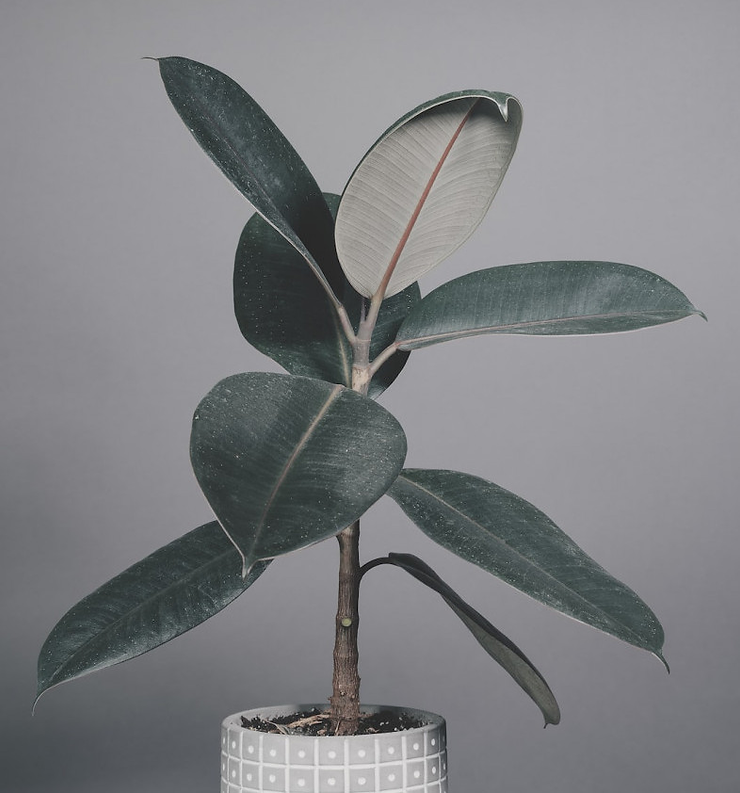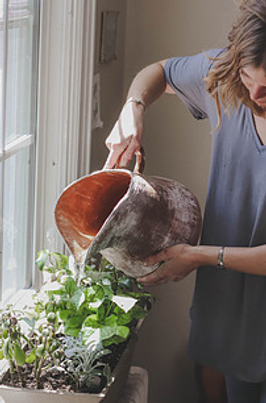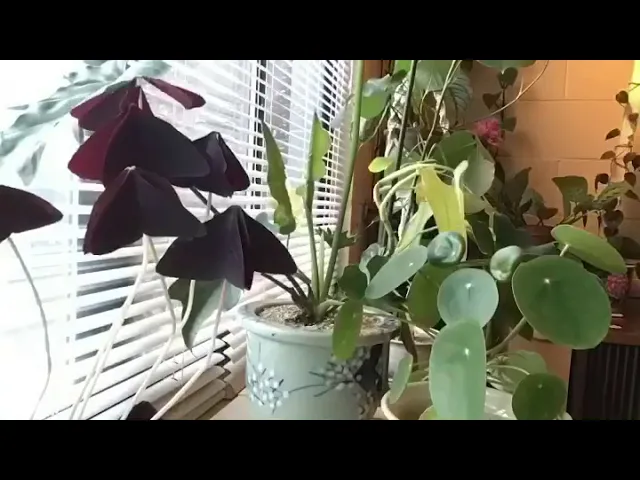We all have them, and if we don’t, we should. Having plants in the home brings the feeling of the great outdoors inside. They add style, beauty, and coziness to our homes. In addition to the aesthetics of houseplants, they have also been shown to boost our mood and health. Read on to learn six benefits of indoor plants and a suggested selection of plants to help create the perfect ambiance for your home.
“Some of the links within this post are affiliate links on which I receive a small compensation from the sale of certain items with no extra cost to you.”
“As an Amazon Associate I earn from qualifying purchases.”
1.Positive Biological Health Benefits
According to the National Library of Medicine, a person can gain positive health results from interacting with plants. It states “Interaction with indoor plants may reduce psychological and physiological stress by suppressing autonomic nervous system activity in young adults.” This particular part of our nervous system controls involuntary actions such as the narrowing of our blood vessels and the beating of our heart.
A study was made on young adults interacting with computer tasks and plant tasks, such as caring for and transplanting plants. After observing and calculating things like blood pressure and heart rates, the study concluded that the tasks involving plants created more natural, comfortable, and soothing feelings than the interaction with computers. Hence, the autonomic nervous system was properly regulating blood pressure and improving heart health. Problems with blood pressure and heart function if not checked can lead to stress and other unhealthy disorders.
2. Faster Healing
According to American Society for Horticultural Study, “Patients in hospital rooms with plants and flowers had significantly shorter hospitalizations, fewer intakes of analgesics, lower ratings of pain, anxiety, and fatigue, and more positive feelings. They also had a higher satisfaction about their rooms when compared with patients in the control group. Findings of this research suggest the therapeutic value of plants in the hospital environment as an effective complementary medicine for surgical patients”.
So the next time you are recuperating from a surgery or an illness, be sure to surround yourself with beautiful houseplants. Try an orchid. They’re beautiful and rather easy to care for.
3. Improve Sense of Well-Being
Studies (from Scandinavia) have shown that just being in the presence of indoor plants can improve a sense of well-being. People tend to react more positively to lush, beautiful, colorful indoor houseplants. They help relax your mind and body and when the mind and body are relaxed it improves your physical well being.
This makes sense to me since winters in the Scandinavian countries are very long and dark. What better way to bring a little bit of summer in than by adding some houseplants?
4. May Sharpen Your Attention
Researchers performed a study involving students in a room with real plants, fake plants, and no plants.
They concluded that, in comparison to having no real plants present, having real plants (not plastic ones) in a classroom can increase attention, and improve concentration. As a retired special needs teacher, I used to have cut flowers in the room but never live plants. I wish I had decorated my room with plants back then!
5. Plants and Therapy
For those experiencing symptoms of mental illness, working with plants can be very therapeutic. Horticultural Therapy helps improve memory, cognitive abilities, task initiation, language skills, and socialization. The AHTA (American Horticultural Therapy Association) is an association that advances the practice of working with plants as therapy.
The Horticultural Therapy Institute located in Denver, Colorado, offers a full curriculum that enables a student to become certified as a Horticultural Therapist. They offer certificate courses in many parts of the US.
Either as a certified therapist or just a person who loves to work with plants, you can help improve peoples’ mental health by introducing them to the wonders of indoor plants.
If you need to brush up on how to care for plants, click here.
Plants are truly amazing!! Watch this video.
6. Naturally Increase Indoor Humidity
In winter many heaters pump dry air throughout the home. Dry air can cause a plethora of health problems including respiratory ailments, nasal, throat and eye irritation, dry skin, nose bleeds and dehydration.
If you do not have a whole-house humidifier to counteract the dryness in the air, how about adding some beautiful indoor houseplants? Water is evaporated into the air through pores on the leaves which are called stomata. Generally speaking, water is drawn into the plant through its roots, through the stems, and then up through the leaves (transpiration). It is then released into the air. Clustering the plants in one spot will encourage transpiration.
Here are a few plants that release water into the air.
Areca Palm
They release a lot of water into the air and are generally easy to grow. They prefer full to partial sunlight, so place them by a window or in a sunny room and keep their soil moist.

Rubber Plant
Rubber plants have large leaves which allow for more transpiration of water into the room. They are easier to care for than a Fiddle Leaf Fig but have the same grandeur as the fig. They thrive in partial sun to partial shade and prefer drier soil. Do not water them until the soil has dried out. They can also tolerate cooler temperatures.

Spider Plant
These super easy growing plants need indirect light, slightly moist soil and a hanging container. Their stems cascade down and produce “babies” that are easily propagated by cutting and placing them in water.

Purify the Air? Not Quite
You may have noticed articles spouting the ability of indoor plants to purify the air. Plant growers have capitalized on this and used it as a great marketing tool. Data has shown that the purchase of indoor houseplants has boomed over the last few years and is projected to expand even more through 2029. One reason for this explosion is this ability to purify indoor air from VOC’s (volatile organic compounds).
According to the EPA VOC’s are found in “paints and lacquers, paint strippers, cleaning supplies, pesticides, building materials and furnishings, office equipment such as copiers and printers, correction fluids and carbonless copy paper, graphics and craft materials including glues and adhesives, permanent markers, and photographic solutions”. In addition, they are more concentrated in closed areas such as inside your home and office.
The information spread by the houseplant marketers is a bit misleading.
How Many Plants Are Needed?
Calling indoor plants “purifying agents” is a misnomer. According to a recent article published in the Journal of Exposure Science and Environmental Epidemiology, you would need 10 plants in one square foot of space to significantly reduce toxins in the air.
Yes, plants do reduce the amount of toxins in the air. However the studies relied upon by the plant marketers were not performed in natural environments.
Instead, many plants were placed in a small (approximately 2 x 2 foot) air tight chamber in which numerous toxins were pumped. When plants are contained in very small air tight containers, yes, air purification happens. Unfortunately, these conditions do not replicate the conditions in a home or office in which air is constantly circulating.
Choose Plants as Accent Pieces in Your Home
Nothing feels more homey than live houseplants. Plants nestled in a corner or clustered on a table will immediately add some chic and ambiance to your home. In fact, “biophilia” is now the new design buzzword. It is recognized by designers and architects alike. The word biophilia originates from the Greek word “philia” meaning love of and “bio” meaning life and living things.
Researchers have found when asked to describe their “zen” place, 90% of people would imagine themselves in a natural setting. Being in or around nature makes us feel good, improves our physical and mental wellbeing, and positively effects our productivity.
So why not add some indoor plants to your home?

Consider Safety For Children and Pets
After reading this post you may be anxious to reap the benefits of indoor plants. However, if you have young children and/or pets, be careful in choosing the plants. Many varieties of plants can cause vomiting, diarrhea, skin irritation, respiratory problems and perhaps even death if ingested.
Here is a brief list of plants to avoid.
-
amaryllis
-
aloe vera
-
cyclamen
-
dieffenbachia
-
English ivy
-
jade
-
many varieties of lilies
-
monstera deliciosa
-
philodendron
-
pothos
-
sago palm
Refer to All About Indoor Plants for more information on safe plants for children and pets.
Conclusion: Benefits of Indoor Plants – Not Just For Beauty
Throughout time, humans have reaped the benefits of plants, either for medicinal purposes, mental stability, or physical wellness. You too can carry on the tradition of enjoying beautiful indoor plants and gain positive health benefits, have quicker healing, an improved sense of well-being, sharpen your attention skills, relieve stress and maintain humidity in your home throughout the winter. So why not jump on the band wagon and purchase some indoor plants? Your house will become more of a home.

I hope you enjoyed this post. Please leave a comment below and share this with others.
Happy Gardening!
Nina


